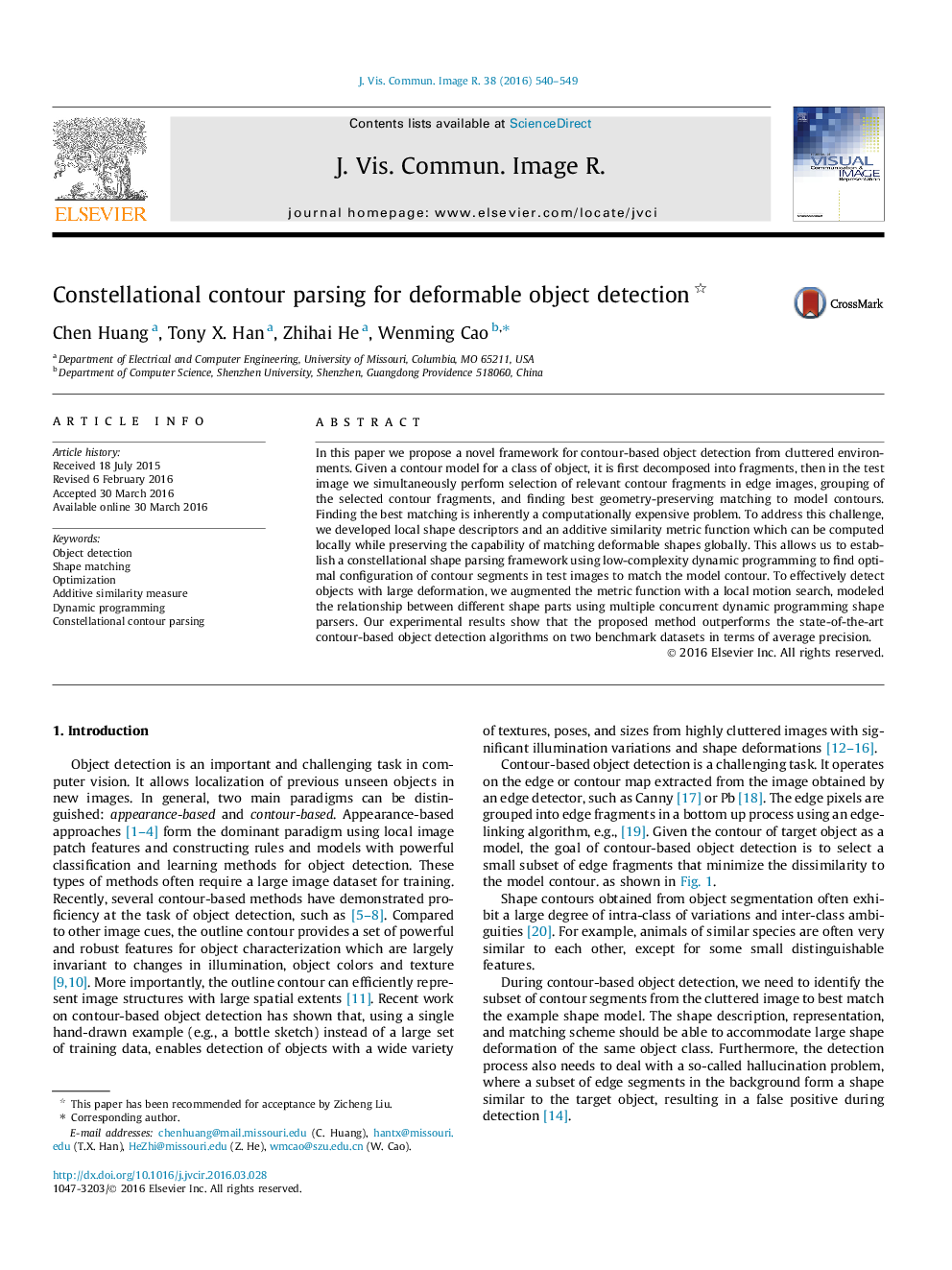| Article ID | Journal | Published Year | Pages | File Type |
|---|---|---|---|---|
| 529691 | Journal of Visual Communication and Image Representation | 2016 | 10 Pages |
•We proposed a novel framework for contour-based object detection from cluttered environment.•We simultaneously perform selecting of contour fragments, grouping of fragments, and finding best matching to model contours.•We developed local shape descriptors and an additive similarity metric function.•We augmented the metric function with a local motion search, modeled the relationship between different shape parts.•The proposed method outperforms the state-of-the-art contour-based object detection algorithms.
In this paper we propose a novel framework for contour-based object detection from cluttered environments. Given a contour model for a class of object, it is first decomposed into fragments, then in the test image we simultaneously perform selection of relevant contour fragments in edge images, grouping of the selected contour fragments, and finding best geometry-preserving matching to model contours. Finding the best matching is inherently a computationally expensive problem. To address this challenge, we developed local shape descriptors and an additive similarity metric function which can be computed locally while preserving the capability of matching deformable shapes globally. This allows us to establish a constellational shape parsing framework using low-complexity dynamic programming to find optimal configuration of contour segments in test images to match the model contour. To effectively detect objects with large deformation, we augmented the metric function with a local motion search, modeled the relationship between different shape parts using multiple concurrent dynamic programming shape parsers. Our experimental results show that the proposed method outperforms the state-of-the-art contour-based object detection algorithms on two benchmark datasets in terms of average precision.
